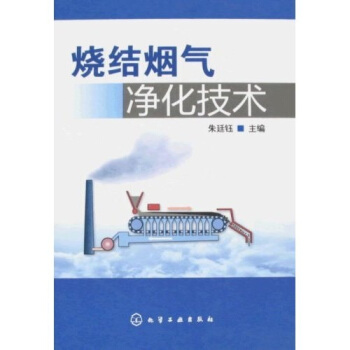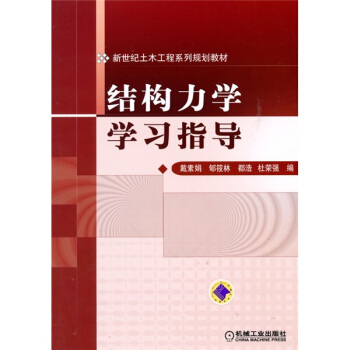![有機化學中的光譜方法(第6版) [Spectroscopic Methodsir Organic Chemistry 6th de]](https://pic.qciss.net/10104476/5e8b0ef6-22a5-43cc-beba-393a1c70a502.jpg)

齣版社: 世界圖書齣版公司
ISBN:9787510004506
版次:1
商品編碼:10104476
包裝:平裝
外文名稱:Spectroscopic Methodsir Organic Chemistry 6th de
開本:16開
齣版時間:2009-05-01
用紙:膠版紙
頁數:291
正文語種:英語
具體描述
內容簡介
《有機化學中的光譜方法(第6版)》是一本由英國劍橋大學D. H. Williams和I. Fleming閤著的有機化學光譜方法經典教材。第1版齣版於1966年,《有機化學中的光譜方法(第6版)》為第6版。書中講述瞭近年來迅猛發展的二維核磁共振(如Tocsy、遠‘H-13C COSY)、MALDI、FT-ICR、TOF等新技術。與時俱進,本版較前版在內容上做瞭較大的改動,有關UV和IR光譜的部分講述的更加準確;豐富瞭關於NMR的內容;介紹MS的部分更加講求結閤實際。全書共分為五章,第1章為紫外和可見光譜,論述瞭電子吸收光譜在測定有機基團中的應用;第2章紅外光譜,闡述瞭傅裏葉紅外和喇曼光譜的樣品製備、光譜選律以及各官能團的特徵吸收頻率;第3章核磁共振波譜,主要介紹瞭‘H和13C核磁共振的經驗參數、各種二維NMR的具體應用;第4章質譜,介紹瞭各種粒子譜以及氣相和液相色譜與質譜的聯用;第5章實例和習題,為讀者提供瞭一些選自研究課題、具有啓發性的實例,也為讀者鞏固所學的知識提供瞭練習。《有機化學中的光譜方法(第6版)》理論和實踐並舉,因此也適閤有機化學工作者做為手冊使用。讀者對象:高校化學係師生、有關研究人員。
內頁插圖
目錄
PrefaceChapter 1: Ultraviolet and visible spectra
1.1 Introduction
1.2 Chromophores
1.3 The absorption laws
1.4 Measurement of the spectrum
1.5 Vibrational fine structure
1.6 Choice of solvent
1.7 Selection rules and intensity
1.8 Solvent effects
1.9 Searching for a chromophore
1.10 Definitions
1.11 Conjugated dienes
1.12 Polyenes
1.13 Polyeneynes and poly-ynes
1.14 Ketones and aldehydes; π-π* transitions
1.15 Ketones and aldehydes; π-π* transitions
1.16 α,β-Unsaturated acids, esters, nitriles and amides
1.17 The benzene ring
1.18 Substituted benzene rings
1.19 Polycyclic aromatic hydrocarbons
1.20 Heteroaromatic compounds
1.21 Quinones
1.22 Corroles, chlorins and porphyrins
1.23 Non-conjugated interacting chromophores
1.24 The effect ofsteric hindrance to coplanarity
1.25 Internet
1.26 Bibliography
Chapter 2: Infrared spectra
2.1 Introduction
2.2 Preparation of samples and examination in an infrared spectrometer
2.3 Examination in a Raman spectrometer
2.4 Selection rules
2.5 The infrared spectrum
2.6 The use of the tables of characteristic group frequencies
2.7 Absorption frequencies of single bonds to hydrogen 3600-2000 cm-
2.8 Absorption frequencies of triple and cumulated double bonds2300-1930 cm-
2.9 Absorption frequencies of the double-bond region 1900-1500 em-1
2.10 Groups absorbing in the fingerprint region <1500 cm-1
2.11 Internet
2.12 Bibliography
2.13 Correlation charts
2.14 Tables of data
Chapter 3: Nuclear magnetic resonance spectra
3.1 Nuclear spin and resonance
3.2 The measurement of spectra
3.3 The chemical shift
3.4 Factors affecting the chemical shift
3.4.1 Intramolecular factors affecting the chemical shift
3.4.2 Intermolecular factors affecting the chemical shift
3.5 Spin-spin coupling to 13C
3.5.1 13C-2H Coupling
3.5.2 13C-1H Coupling
3.5.3 13C-13C Coupling
3.6 1H-1H Vieinal coupling (3JHH)
3.7 1H-1H Geminal coupling (2JHH)
3.8 1H-1H Long-range coupling (4JHH and 5JHH)
3.9 Deviations from first-order coupling
3.10 The magnitude of 1H-1H coupling constants
3.10.1 Vicinal coupling 3JHH
3.10.2 Geminal coupling (2JHH)
3.10.3 Long-range coupling (4JHH and 5JHH)
3.11 Line broadening and environmental exchange
3.11.1 Efficient relaxation
3.11.2 Environmental exchange
3.12 Improving the NMR spectrum
3.12.1 The effect of changing the magnetic field
3.12.2 Shift reagents
3.12.3 Solvent effects
3.13 Spin decoupling
3.13.1 Simple spin decoupling
3.13.2 Difference decoupling
3.14 The nuclear Overhanser effect
3.14.1 Origins
3.14.2 NOE Difference spectra
3.15 Assignment ofCH3, CH2, CH and quaternary carbons in 13C NMR
3.16 Identifying spin systems——1D-TOCSY
3.17 The separation of chemical shift and coupling onto different axes
3.18 Two-dimensional NMR
3.19 COSY spectra
3.20 NOESY spectra
3.21 2D-TOCSY spectra
3.22 1H-13C COSY spectra
3.22.1 Heteronuclear Multiple Quantum Coherence (HMQC) spectra
3.22.2 Heteronuclear Multiple Bond Connectivity (HMBC) spectra
3.23 Measuring 13C-IH coupling constants (HSQC-HECADE spectra)
3.24 Identifying 13C-13C connections (INADEQUATE spectra)
3.25 Three- and four-dimensional NMR
3.26 Hints for spectroscopic interpretation and structure determination
3.26.1 Carbon spectra
3.26.2 Proton spectra
3.26.3 Hetero-correlations
3.27 Internet
3.28 Bibliography
3.29 Tables of data
Chapter4: Mass spectra
4.1 Introduction
4.2 Ion production from readily volatile molecules
4.2.1 Electron impact (EI)
4.2.2 Chemical Ionisation (CI)
4.3 Ion production from poorly volatile molecules
4.3.1 Fast ion bombardment (FIB or LSIMS)
4.3.2 Laser desorption (LD) and matrix-assisted laser desorption (MALDI)
4.3.3 Electrospray ionisation (ESI)
4.4 Ion analysis
4.4.1 Magnetic analysers
4.4.2 Combined magnetic and electrostatic analysers——high-resolution mass spectra (HRMS)
4.4.3 Ion cyclotron resonance (ICR) analysers
4.4.4 Time-of-flight (TOF) analysers
4.4.5 Quadrupole analysers
4.4.6 Ion-trap analysers
4.5 Structural information from mass spectra
4.5.1 Isotopic abundances
4.5.2 EI spectra
4.5.3 CI spectra
4.5.4 FIB (LSMIS) spectra
4.5.5 MALDI spectra
4.5.6 ESI spectra
4.5.7 ESI-FT-ICR and ESI-FT-Orbitrap spectra
4.6 Separation coupled to mass spectrometry
4.6.1 GC/MS and LC/MS
4.6.2 MS/MS
4.7 MS data systems
4.8 Specific ion monitoring and quantitative MS (SIM and MIM)
4.9 Interprcting the spectrum of an unknown
4.10 Internet
4.11 Bibliography
4.12 Tables of data
Chapter 5: Practice in structure determination
5.1 General approach
5.2 Simple worked examples using 13C NMR alone
5.3 Simple worked examples using 1H N-MR alone
5.4 Simple worked examples using the combined application of all fourspectroscopic ethods
5.5 Simple problems using 13C NMR or joint application of IR and 13C NMR
5.6 Simple problems using 1H NMR
5.7 Problems using a combination of spectroscopic methods
5.8 Answers to problems 1-33
Index
精彩書摘
The energy absorbed by the matrix is transferred indirectly to the sample, which reduces any sample decomposition. The matrix is chosen to have solubility properties similar to those of the sample, in order that the sample molecules are properly dispersed. Higher molecular weight oligomeric clumps are produced as 2M+, 3M+, and so on, but these are usually minor components of the spectrum if a well-matched matrix is chosen.4.3.3 Electrospray ionisation (ESl) An electrospray is the term applied to the small flow of liquid (generally 1-10 lxl/min) from a capillary needle when a potential difference typically of 3-6 kV is applied between the end of the capillary and a cylindrical electrode located 0.3-2 cm away (Fig. 4.4). The liquid leaves the capillary as a fine mist at or near atmospheric pressure, and consists of highly charged liquid droplets. The charge on these droplets may be selected as positive or negative according to the sign of the voltage applied to the capillary. ESI is especially useful since it can be used to analyse directly the effluent from an HPLC column.
The use of a sheath gas or nebulising gas promotes efficient spraying of the solution of the sample from the capillary. Sample molecules dissolved in the spray are released from the droplets by evaporation of the solvent. This evaporation is accomplished by passing a drying gas across the spray before it enters a capillary. As the droplets are multiply charged, and reduced in size by evaporation, the rate of desolvation is increased because of repulsive Coulombic forces. These forces eventually overcome the cohesive forces of the droplet, and an MH~ (or M - H+) molecular ion free of solvent is finally produced. The charged particles are carried, by an appropriate electric field, through a capillary and into an ion analyser.
前言/序言
This book is the sixth edition of a well-established introductory guide to the interpretation of the ultraviolet, infrared, nuclear magnetic resonance and mass spectra of organic compounds. It is a textbook suitable for a first course in the application of these techniques to structure determination, and as a handbook for organic chemists to keep on their desks throughout their career. These four spectroscopic methods have been used routinely for several decades to determine the structure of organic compounds, both those made by synthesis and those isolated from natural sources. Every organic chemist needs to be skilled in how to apply them, and to know which method works for which problem. In outline, the ultraviolet spectrum identifies conjugated systems, the infrared spectrum identifies functional groups, the nuclear magnetic resonance spectra identify how the atoms are connected, and the mass spectrum gives the molecular formula. One or more of these techniques nowadays is very frequently enough to identify the complete chemical structure of an unknown compo用戶評價
評分
6666666666666666
評分6666666666666666
評分幫朋友買的,她很滿意。
評分很不錯的一本書,英文的。
評分書很好 隻是價格略貴
評分6666666666666666
評分漢語版,我沒看,不喜歡翻譯過來的書刊
評分經典的參考手冊。
評分幫朋友買的,她很滿意。
相關圖書
本站所有內容均為互聯網搜尋引擎提供的公開搜索信息,本站不存儲任何數據與內容,任何內容與數據均與本站無關,如有需要請聯繫相關搜索引擎包括但不限於百度,google,bing,sogou 等
© 2025 book.qciss.net All Rights Reserved. 圖書大百科 版權所有

![非平衡態量子場論(英文版) [Quantum Field Theory Of Non-equilibrium States] pdf epub mobi 电子书 下载](https://pic.qciss.net/10104526/02fba0b5-3ada-4fc5-8409-e38c4dcdc447.jpg)
![牛津英語百科分類詞典係列:牛津地球科學詞典 [Oxford Dictionary of Earth Sciences] pdf epub mobi 电子书 下载](https://pic.qciss.net/10114802/e9cc17e1-f223-46ae-bb7b-80d5eaafe553.jpg)
![染色體基因與疾病 [Chromosome, gene and disease] pdf epub mobi 电子书 下载](https://pic.qciss.net/10122736/10add117-c020-46c2-a009-1ec15744313c.jpg)


![細胞周期調控原理 [The Cell Cycle:Principles of Control] pdf epub mobi 电子书 下载](https://pic.qciss.net/10123398/bd0d4a1a-211a-4901-9a59-e903bf8e2445.jpg)













